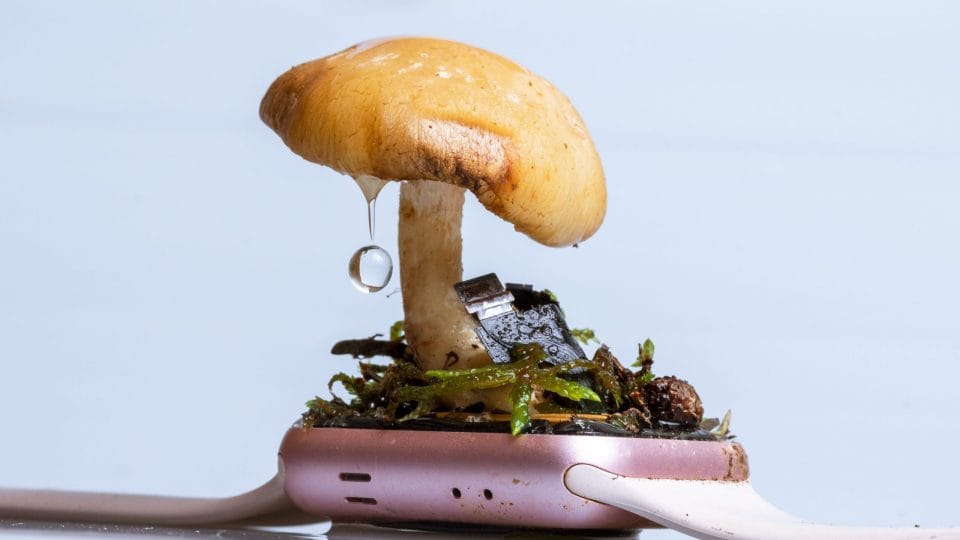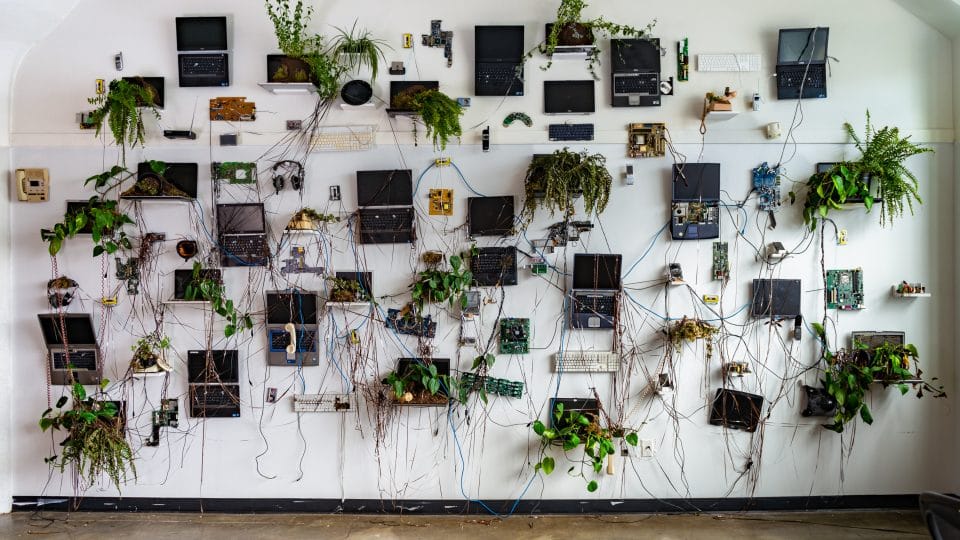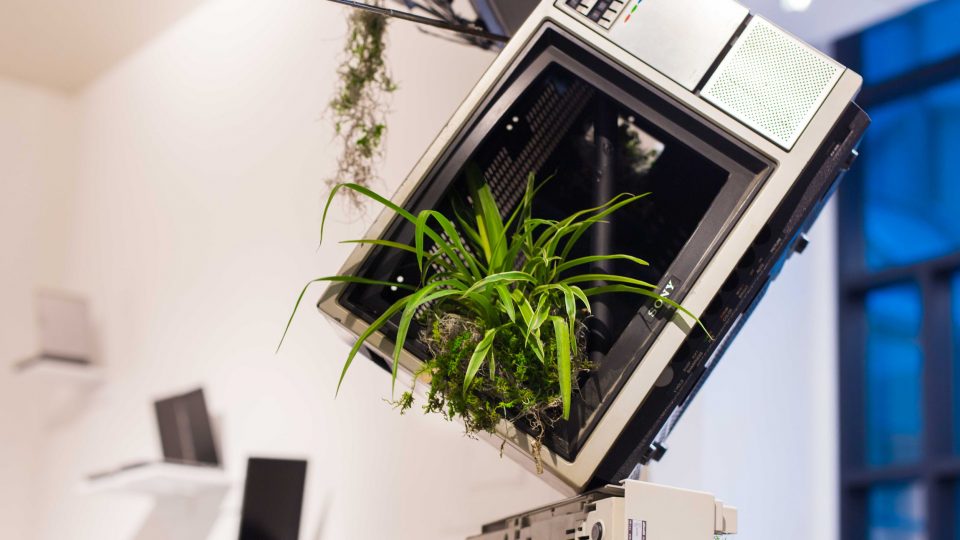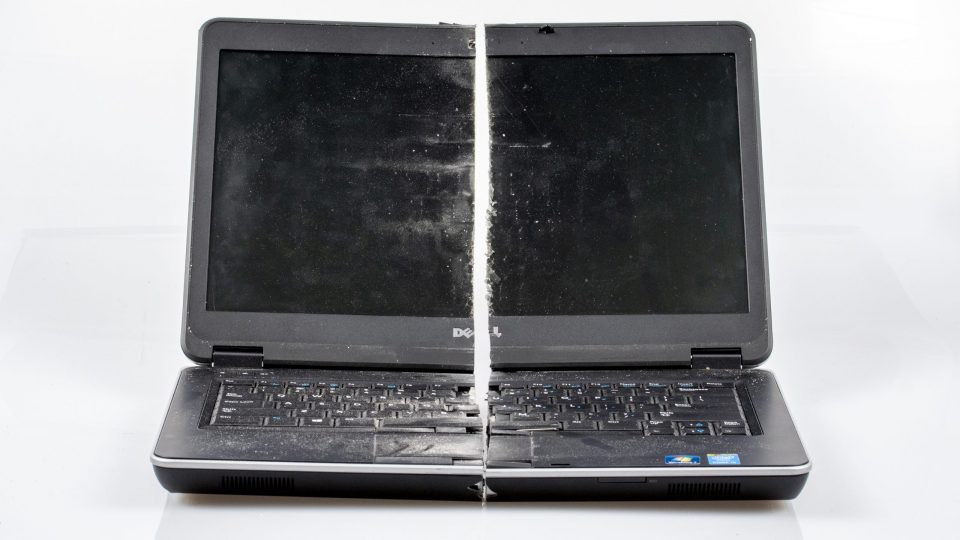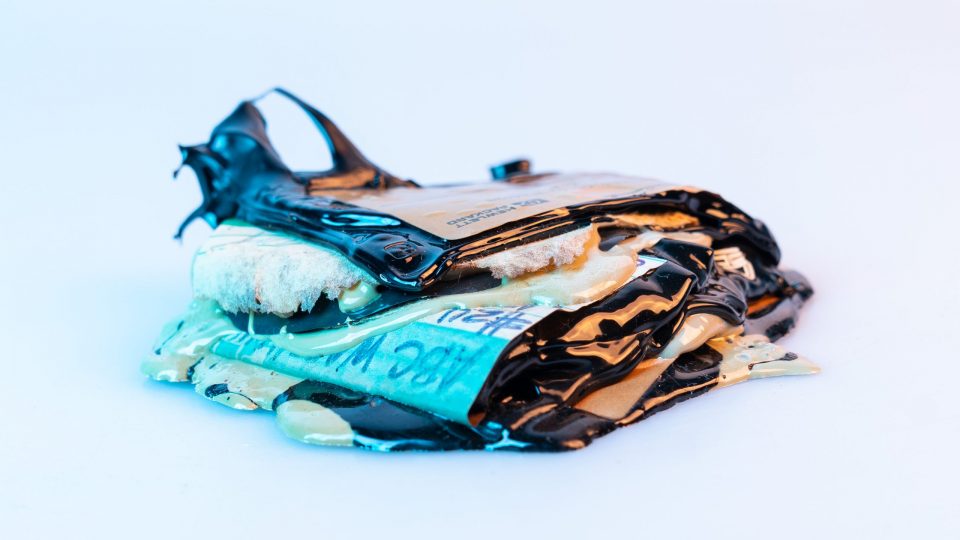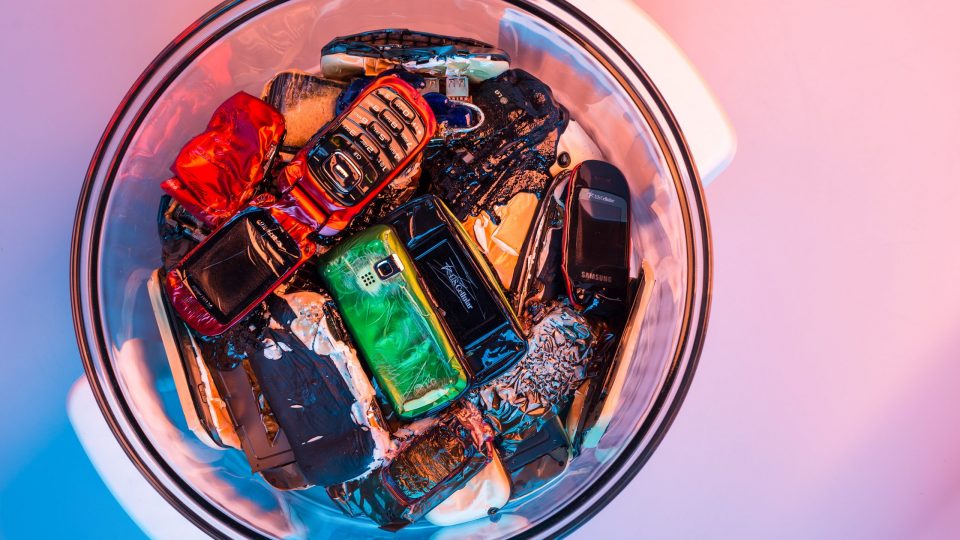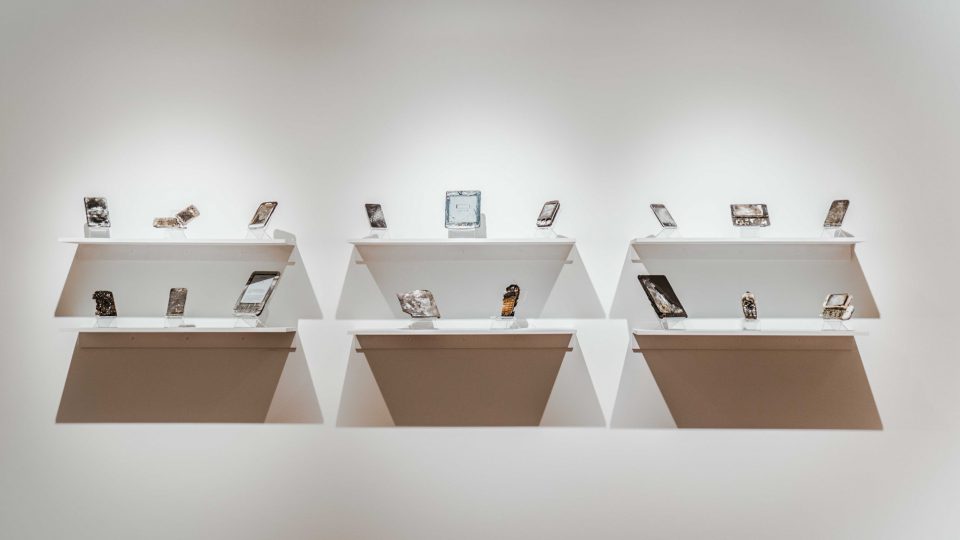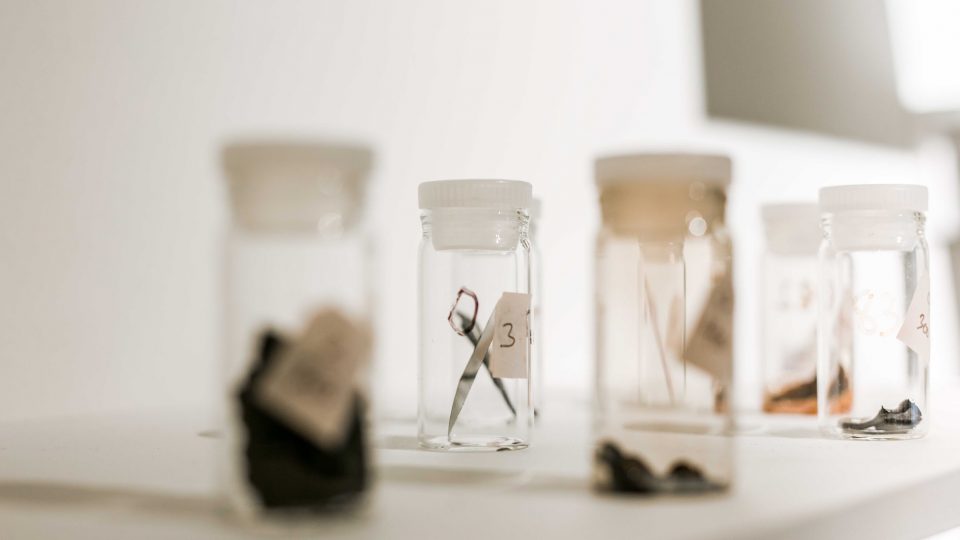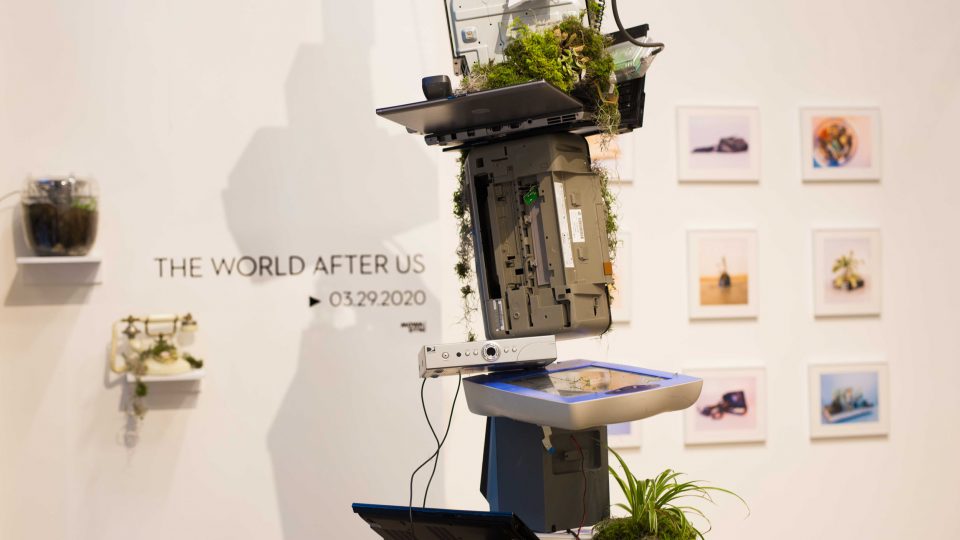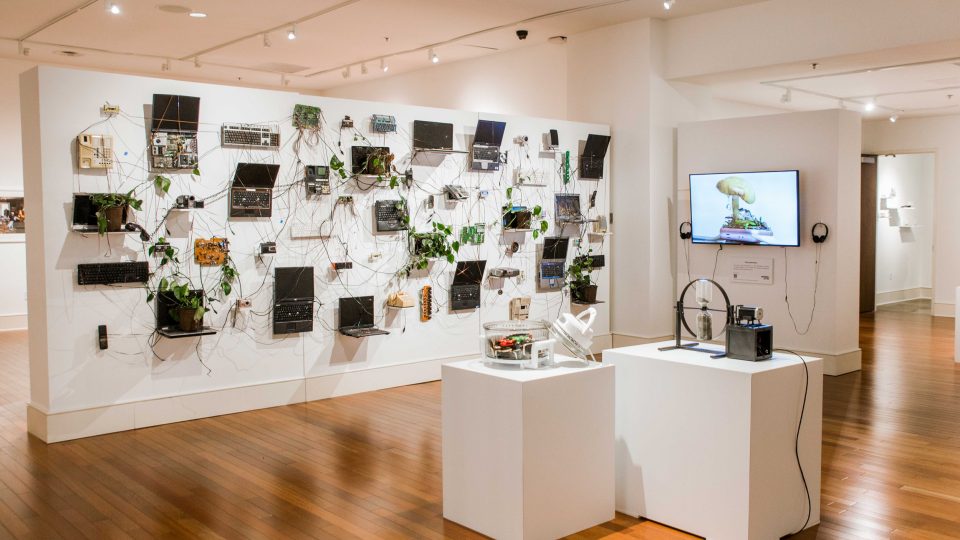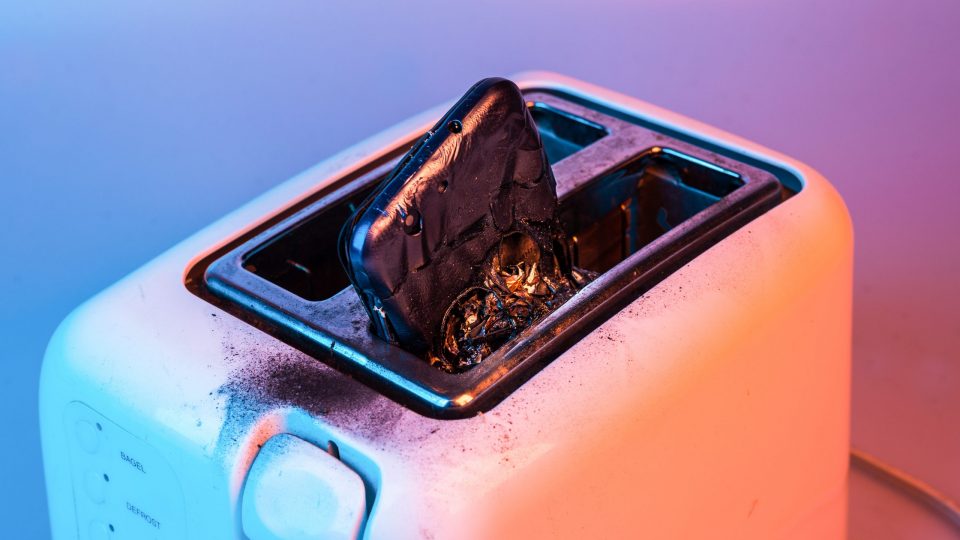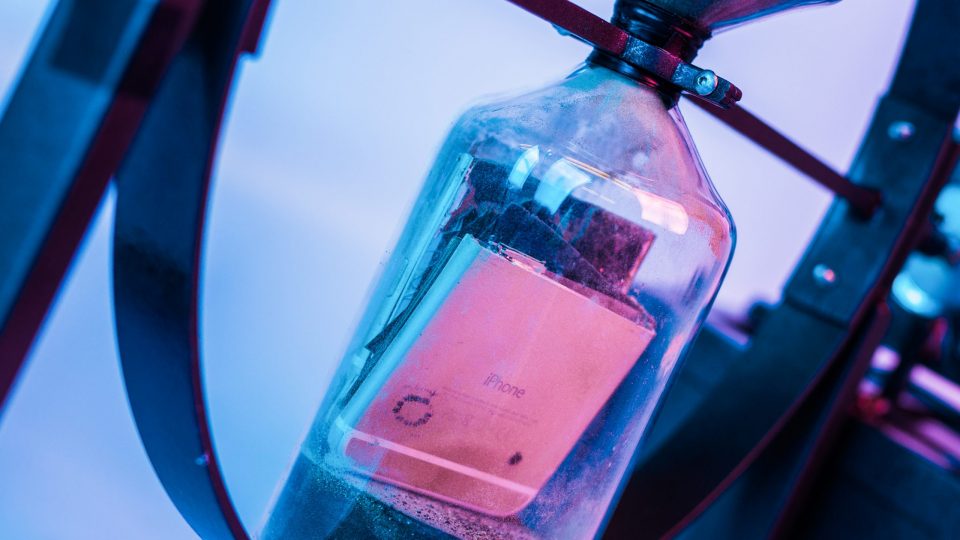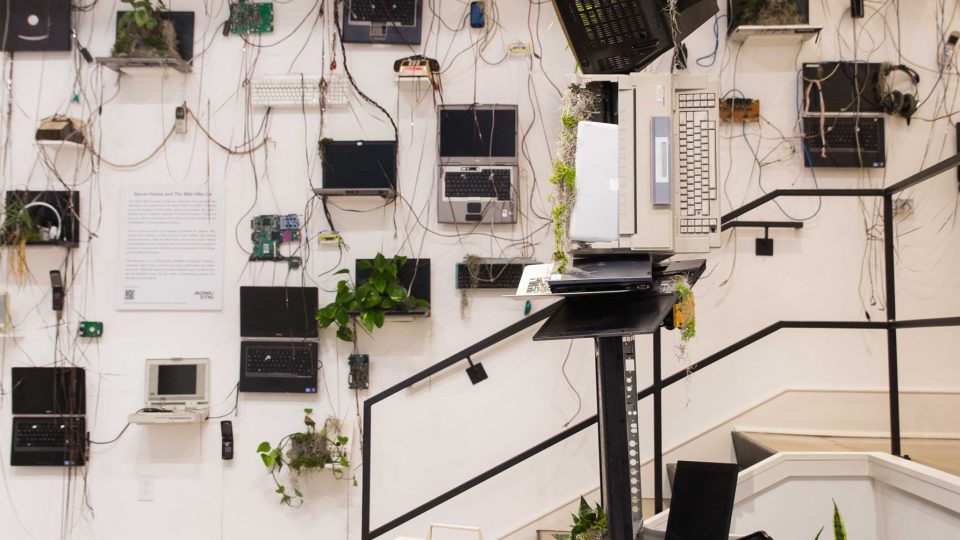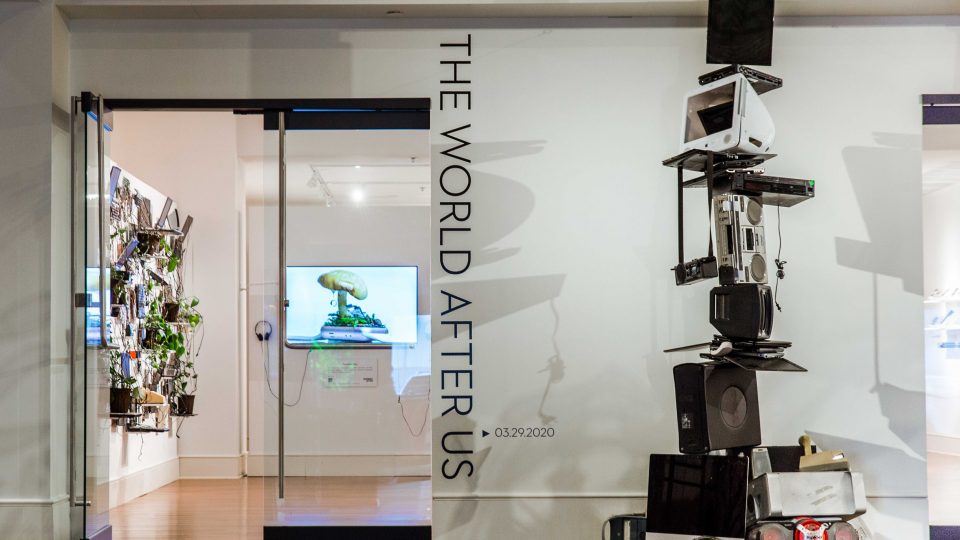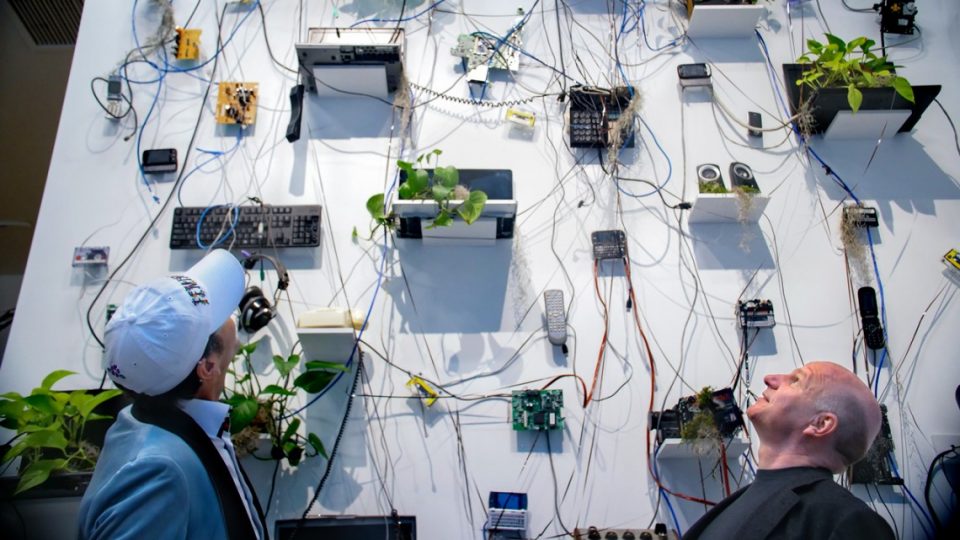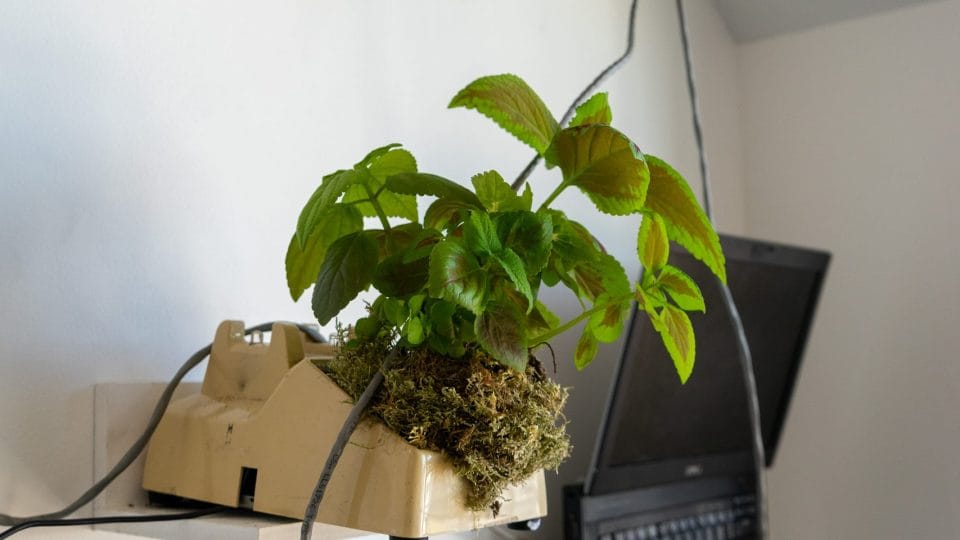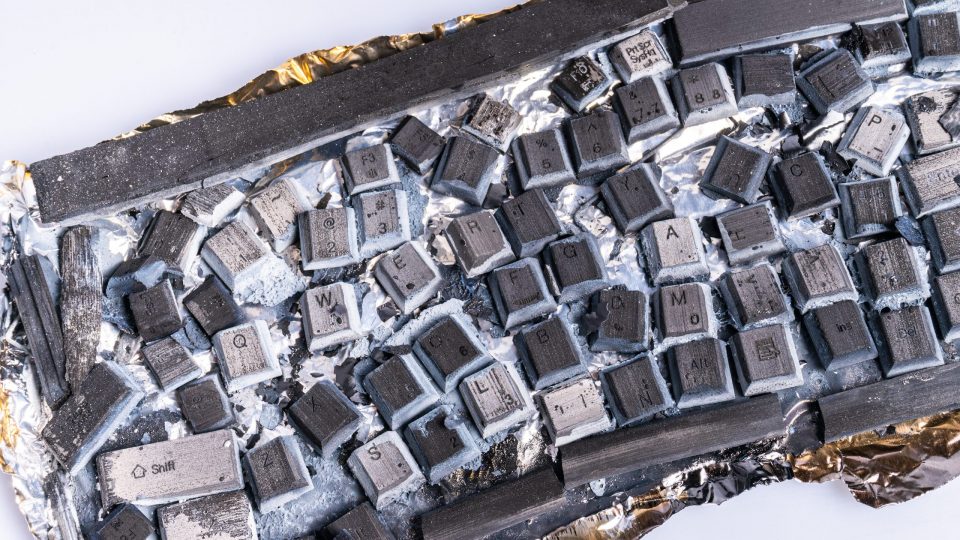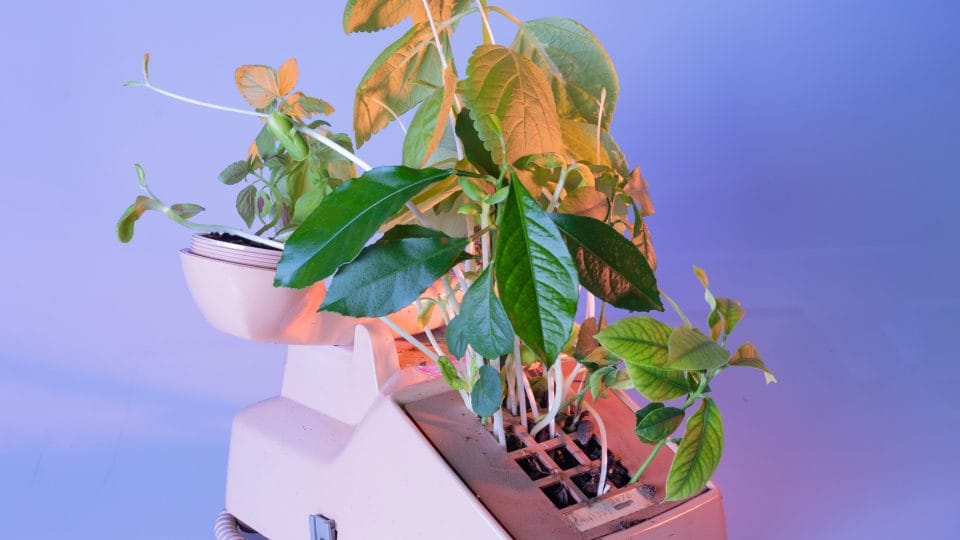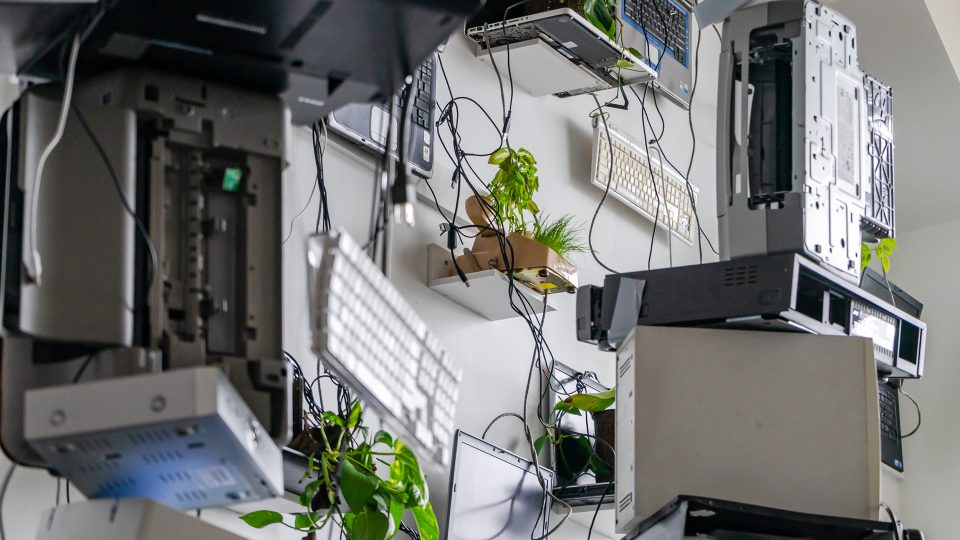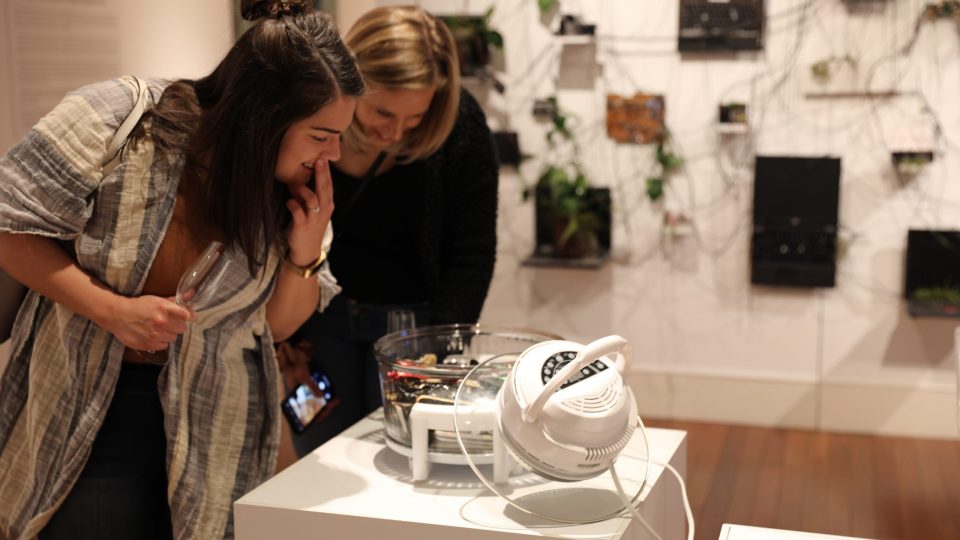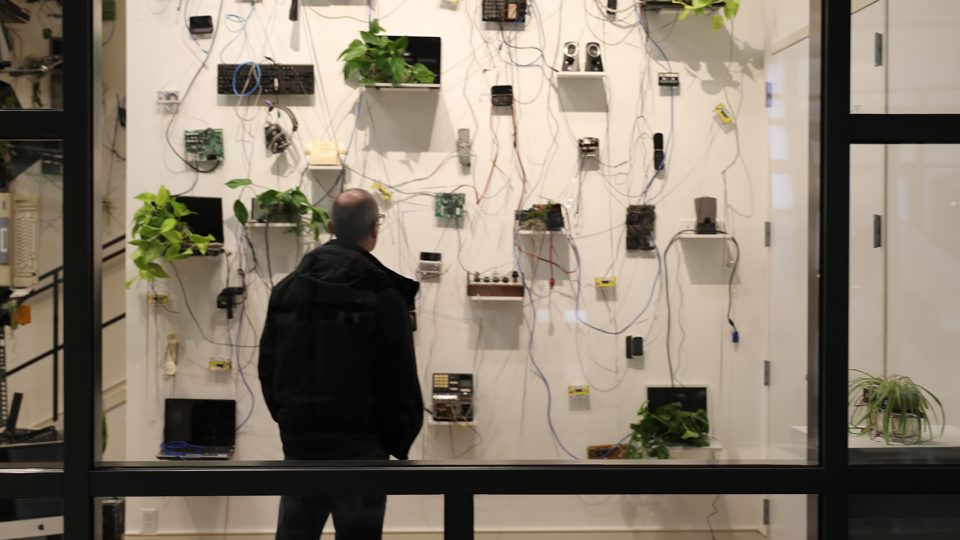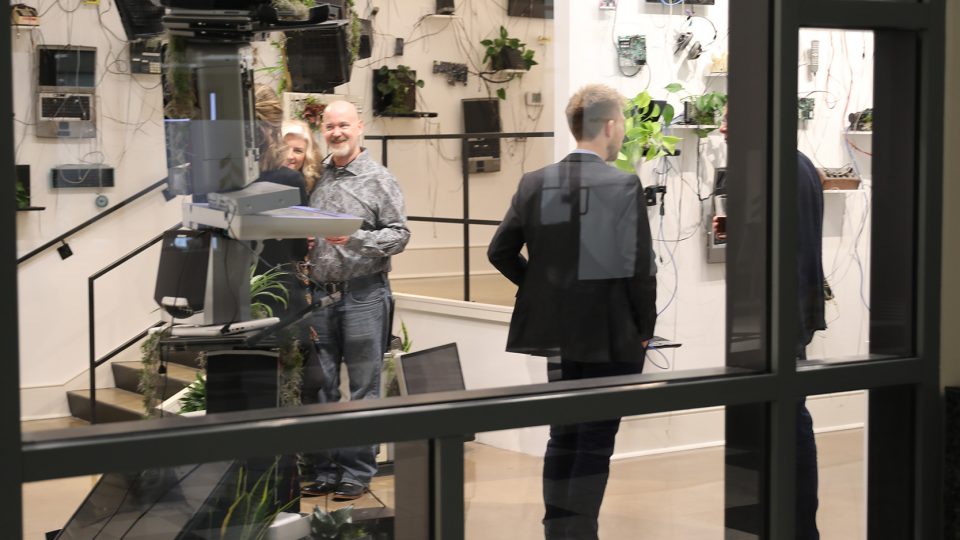The World After Us: imaging techno-aesthetic futures is a traveling solo exhibition of sculptures, installations, prints, and photographs takes the forms of: a wall-hung jungle and literal towers of computer detritus and biological reclamation; artificially aged electronics; and computers and phones recovered as ink, manual tools, or paper. It asks:
What will digital media be and do, after us?
What will my laptop, phone, or tablet look like in a million years?
How will our devices weather or grow over time?
What else might our techno-waste be, and how might we sense and feel this?
Where might electronics lead our environmental and economic politics?
Can we plan and act toward new and different futures?
Taking cues from journalist Alan Weisman’s provocative book The World Without Us, this exhibition is a timely and relevant series of aesthetic and ethical provocations around where and how we might change our ecological trajectories. The World After Us asks us to rethink and potentially transform conversations, thoughts, and actions around media production, use, and waste. At stake, whether in our everyday interactions or on a much larger scale, are the relationships between humans and the natural world on the one hand, politics and commerce on the other.
The World After Us makes available a 200-page hardcover catalog, a short documentary (also below), and an audio tour. It has been featured in WIRED, CNET, Fast Company, New City Art, the Shepherd Express, on Spectrum News, as a Creative Mornings talk, and elsewhere. It has been generously supported by the UWM Office of Research.
The World After Us premiered at The Museum of Wisconsin Art | Downtown (MoWA | DTN) in the Saint Kate Arts Hotel in Milwaukee, WI, January – March 2020, traveled to NY, the Binghamton University Art Museum, January – March 2022, the latter including a new commission, Circuit Boardwalk, and opened at the Krasl Art Center in Michigan from January – April 2023, also including a commissioned, semi-permanent installation of The Wall.
The NFT Collection
The World After Us also lives as a staged photographic and video NFT collection of temporary sculptures, which combine plant life with electronic waste, and scientific experimentation with artistic exploration. They take the forms of: electronic waste, reclaimed by plant life; fossilized and reconfigured phones and laptops; and reimagined and re-formed digital tools.
The NFTs were originally available via the now defunct Quantum.Art, where 6 were sold (view these on OpenSea). The other works, below, are available as 1/1s on request. Click then use arrows to view uncropped layouts.
Expanded Description
In 2018, more than one and a half billion mobile phones were sold worldwide. That’s more than four million sold per day, and doesn’t include the produced but unsold phones that will eventually also become waste. Add chargers, watches, and tablets, laptops and desktops, and more: it’s terrifying. And the waste we make when we dig up the raw materials and produce these gadgets is even worse.
The World After Us most fundamentally asks: What will happen to our electronics over time? What are the implications of those happenings? And the show opens several avenues of aesthetic and ethical possibility in response. It resituates, speculates, wonders, and proposes.
For example, the exhibited Phossils are, more or less, fossilized phones. These are mobile and other devices subjected to heat and pressure, extreme cold or high speed blending, and/or pyrolysis (as part of a collaboration with a biochemist and professor at Cornell University) to create a kind of artificial, geological time. Cook, freeze, burn, smash, blend, and more… and put the results on exhibit as sculptures and photographs, in beakers and tubes, on pedestals and stands, as staged archaeological finds and/or as large-scale installations on walls and towers. This work is not post-apocalyptic; rather, it imagines potential futures while asking viewers to be mindful of their media in the present.
Server Farms take up Weisman’s core proposition: nonhuman life retaking the planet. Here repurposed computers and other technological equipment function as planters: an Apple watch grows moss and mushrooms; in a gutted iMac, grass replaces the screen and motherboard; an old telephone sprouts shrubbery through earpieces and keys. Each flowers, flourishes, incubates, and spreads. What life may spur, how might techno- minerals diffuse? Server Farms are also combined with Phossils in installations (The Wall After Us) and photographs (Drivers).
And can we reinvent what digital waste might be and do right now? utilities see e-waste re-thought as a raw material, and transmuted into other (somewhat) usable forms. In Phonēy Prints, for example, mobile phones are ground into a fine powder, and mixed with extender to turn them into ink for fine art prints (of phones), on paper made from my old t-shirts. Applecations see melted aluminum iMacs from the late 2000s cast into a hammer, screwdriver, and wrench. And Circuitous tools are routed circuit boards turned into a saw, axe, and trowel. These ask viewers to be curious and imagine, to test, play, and transform. We should not only ask what digital media will be and do, after us. We must reinvent what digital waste can be and do, in the present.
The World After Us is political, but speaks across political lines. It is completely physical, but asks us to think virtually, about the potentials our futures hold. It is multimedia, networked, and participatory, but not in the ways so often hyped up in and around new technologies.
It is impossible for humans to truly fathom our planet on its own terms and at its own size, or conversely from the perspective of bacteria. But we can feel such things, through art and storytelling – making our aesthetic encounters both conceptually and ethically vital toward new possibilities. The World After Us questions how we move, think, feel, and act with the Earth and its inhabitants, both living and otherwise. It suggests alternatives to current modes of life and living, science and sensation, waste and production, perception and action.
Related texts/press:

